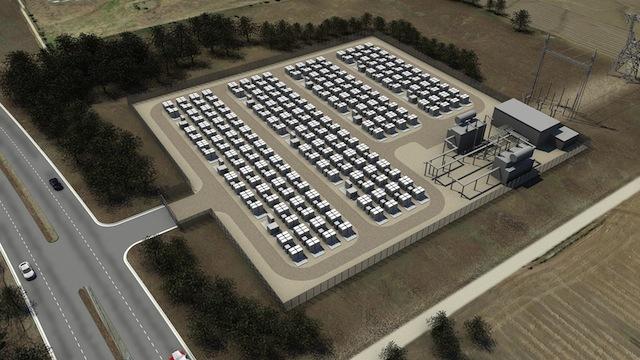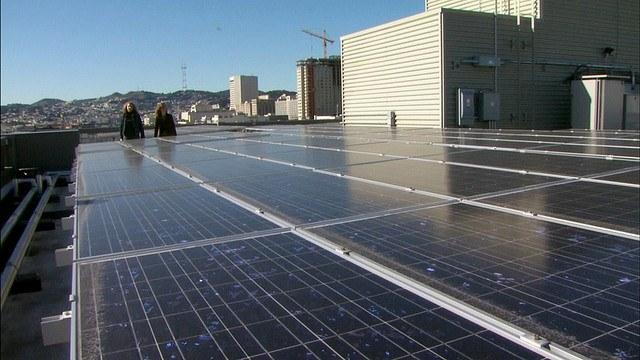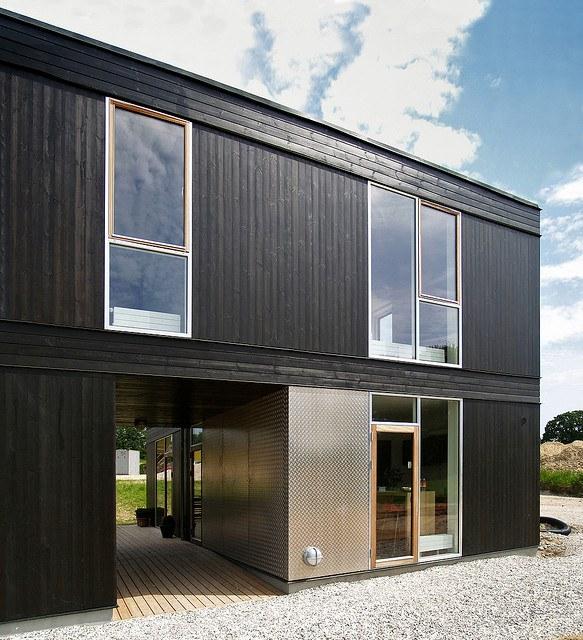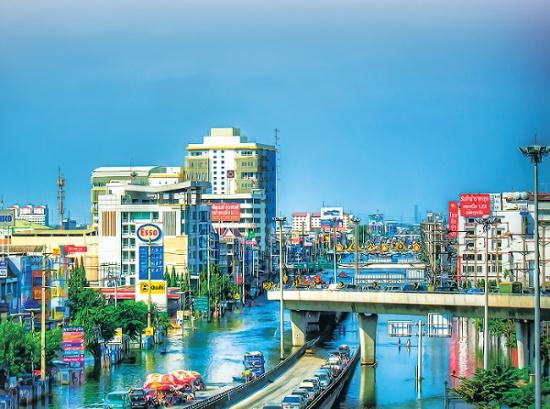Gateway Drugs for New Green Consumers


By Chet Van Wert
Some environmentally conscious consumers just get it. They instinctively realize that every product they buy is either a vote for sustainable business and a greener world or a vote for business as usual.
It took me a long time to get the message, and my discussions with friends and strangers have convinced me that I’m not the only one who is slow to understand. For many of us, it’s a long and winding road. Our green customer journey starts with one sustainably-made product and then, over time, extends to additional products and categories. Ultimately, the result is a consumer who really gets it, but it can take years.
A crucial job for sustainable business is accelerating growth in the number of consumers who will make the effort to find and buy green products. I’m convinced that this challenge is not just about communicating a sustainability message, but also about getting people to actually use and enjoy a green product. This is the gateway drug, so to speak, of sustainability. Through repeated use, not only does the consumer become attached to the gateway product, but they also become susceptible to the allure of other sustainable products.
So, which products can most effectively play the gateway role to creating green consumers? Here are a few ideas. I’d love to hear yours.
T-shirts
One source says that 2 billion T-shirts are sold globally each year. That seems low to me, considering that there are 6 or 7 billion of us, but the key is that T-shirts are inexpensive and everywhere. They often display a message, logo or affiliation, so adding a small sustainability message would not be difficult. I think it is quite possible to encapsulate in a logo and a few words the fact that a T-shirt is made sustainably and why that is important.
As the organizations you are involved with source new T-shirts, be sure to buy organic and include in your design a message promoting that fact and why it’s important. Can you believe that the T-shirts sold this year on Earthday.org -- on the 45th Earth Day -- were 65 percent polyester, with no mention of anything sustainable in the supply chain or operations?
Baby clothes
Which onesie are you going to buy for your baby, or as a gift – the one produced with pesticides and toxic dyes … or the organic option? Lots of organic baby clothing brands are springing up, making these relatively easy products to find. Put a little promo piece in the package with the organic baby product and, voila, you might turn a whole family green!
Whatever your product (well, maybe not coffee, although moms certainly use a lot of it), is there a baby version that offers your company a simple way to spread the sustainable products message?
Coffee
Coffee crops are enormous users of pesticides and destroyers of ecosystems globally. Sustainably-produced coffee – delicious, organic, fair trade coffee – is increasingly available in grocery stores and online. This is also an easy and inexpensive switch to make. With the switch, though, we have to find teaching moments. I loved Fresh & Co. New York's switch to organic coffee, proudly announced with street signage. But I wondered if the sign could have done just a little to communicate why organic coffee is important. How about, “No rainforests cleared, no pesticides needed to bring you a delicious cup of coffee”?
The human race drinks 1.6 billion (with a “b”) cups a day. Be sure your office/church/book club/event is using organic coffee and letting everyone know why. It’s a great opportunity to talk about your sustainable business.
The intro offer
Whatever your product, leverage your existing customer base to share it with their like-minded friends. In just the past month, I’ve converted two personal friends to organic coffee. All I had to do was tell them it was available and at least as good as what they were already drinking. A friends-and-family discount offer would have been the perfect push to make sure I shared that message widely, and it would have been so easy for me to share via email.
Successful sellers of gateway products know it’s all about the free trial. Make your special introductory offers as generous as possible, and a regular part of your marketing activity – not just a one-time effort. Kindly Coffee, for example, offers a free 4-ounce sample package (plus shipping charge) on its website. I’d guess it’s their most cost-effective new customer acquisition tactic.
Please share your thoughts about gateway products and how they can be used to spread the sustainable product message.
Image credit: 1) Flickr/Sunny_mjx 2) Chet Van Wert
Chet Van Wert is a long-time direct / digital marketer in New York. His blog and directory at GreenerDailyLife.com was created to help consumers make the journey to environmentally sustainable living and to help sustainable businesses find receptive audiences for their products.
3p Weekend: 7 Things You Need to Know About Tesla's New Home Battery


With a busy week behind you and the weekend within reach, there’s no shame in taking things a bit easy on Friday afternoon. With this in mind, every Friday TriplePundit will give you a fun, easy read on a topic you care about. So, take a break from those endless email threads and spend five minutes catching up on the latest trends in sustainability and business.
When Tesla Motors CEO Elon Musk tweeted earlier this month that the automaker would soon release a product sans wheels, the Internet went into a flurry of speculation. Some headlines predicted that Tesla's new battery would "eliminate electricity bills," while others took it a step further saying it would "change the world."
But now, after the big unveiling late last night, the time for speculation is over. Quell your curiosity, and spend 10 minutes learning everything you need to know about Tesla's new battery.
1. It helps homeowners save energy, even before they go renewable
Tesla's new home battery is surely a boon for homeowners with rooftop solar panels: Since we tend to use more energy in the morning and evening when sunlight is not plentiful, excess solar energy is often sold to the power company and purchased back in the evening, Tesla pointed out. "This mismatch adds demand on power plants and increases carbon emissions," the company said.Tesla's new battery, Powerwall, fills in the gap -- allowing homeowners to store solar energy onsite, ensuring that they have access to their own energy day and night. But it's not just homeowners with rooftop solar who stand to benefit: The Powerwall can also store utility-supplied energy when rates are low and save it for use during peak hours, reducing demand on utilities during peak times and cutting down dramatically on monthly bills. The battery also helps homeowners fortify their homes against power outages -- and frees them from dirty diesel backup generators -- by providing a backup electricity supply.
2. It's (somewhat) reasonably priced
Before the big unveiling last night, rumor had it that Tesla's Powerwall batteries would be leased, not owned. But it turns out the batteries can be purchased outright for a (somewhat) wallet-friendly cost. The 10 kilowatt-hour Powerwall model, optimized for backup applications, is available for $3,500, excluding the cost of an inverter and professional installation. (Tesla is working with another Elon Musk venture, SolarCity, to install the systems and plans to announce other installation partners in the near future.) The 7 kWh model, optimized for daily-use applications in tandem with solar energy, goes for $3,000.During the announcement, Musk said that leasing the battery would also be an option, and that the price-point was "without any incentives" from local, state or federal governments, reports Ars Technica.
3. Its modular design stores even more power
Unlike most home storage batteries on the market today, which tend to be bulky and difficult to install, the Powerwall offers a sleek and functional design befitting the Tesla brand. "Based on the powertrain architecture and components of Tesla electric vehicles," the Powerwall may even inspire folks to start using the words "sexy" and "energy storage" in the same sentence.Homes with greater energy needs can install multiple batteries together to go completely off-grid or keep the lights on for weeks in the event of prolonged power outages in rural areas.
4. Businesses are already using it
Thanks to modular design, businesses looking to lower bills, reduce power-outage risks or employ onsite renewable energy can install a bevy of Powerwall batteries to meet their needs. "Business Storage anticipates and discharges stored power during a facility’s times of highest usage, reducing the demand charge component of the energy energy bills," Tesla said in a statement.In fact, a handful of businesses are already using the Powerwall -- and Tesla's new arm, Tesla Energy -- to increase renewable energy usage and cut costs:
Amazon: Amazon Web Services has a long-term commitment to achieve 100 percent renewable energy usage for its global infrastructure footprint. And it seems the company has been working with Tesla on the sly to achieve its goal: "We’ve been working closely with Tesla for the past year to drive innovative applications of high-capacity battery technology in data center applications with the ultimate goal of reducing the technical barriers limiting widespread adoption of renewables in the grid,” said James Hamilton, a 'distinguished engineer' at Amazon Web Services. "We're excited to roll out a 4.8 megawatt hour pilot of Tesla’s energy storage batteries in our U.S. West (Northern California) Region. This complements our strategy to use renewable energy to power our global infrastructure.”
Target: “As part of Target’s support to our communities, we’re excited to partner with Tesla on a pilot test at select Target stores to incorporate Tesla Energy Storage as part of our energy strategy,” said David Hughes, senior group manager of energy management at Target.
Jackson Family Wines: In tandem with onsite renewable energy, Jackson Family Wines will use Powerwall technology to "mitigate energy use around four areas that account for the most consumption in our winemaking process: refrigeration/cooling, lighting, compressed air and process water treatment."
5. It's for utilities, too
Musk hinted that the company's new battery may one day be used for utility grids, but it seems we're already there. For utility scale systems, 100 kilowatt-hour battery blocks are grouped to scale from 500kWh to more than 10 megawatt-hours, Tesla said. The system supports applications like "peak shaving, load shifting and demand response for commercial customers while offering, renewable firming and a variety of grid services at utility scales, the company said.Lest you assume this is still just speculation, four utilities are already partnering with Tesla to employ the new technology:
Southern California Edison: Southern California Edison (SCE) has developed the nation’s largest battery storage system and has contracts in place for an additional 264 megawatts of storage, including projects using Tesla batteries. SCE is working with Tesla on three demand-response demonstration projects to "test communication capabilities" and "explore rebates to customers who allow SCE to manage their battery charging" -- with the ultimate goal of increasing renewable energy use while ensuring continued grid reliability.
SoCore Energy, a subsidiary of SCE's parent company, is working with a client to design and install Tesla batteries at two of its retail properties in Southern California. The sites will feature Tesla battery units that will be charged with electricity from the grid during non-peak hours at night.
AES: As a launch partner, AES says it will employe Tesla's battery technology across its distributed energy platforms. The batteries will complement the AES Advancion digital control system, regarded as best-in-class for energy management.
Advanced Microgrid Solutions: Advanced Microgrid Solutions has high praise for the new technology: “Tesla’s bold approach to advancing battery technology will change the way we build our cities forever," said Susan Kennedy, the company's co-founder and CEO.
OnCor: Oncor also seems pretty stoked to start using Tesla batteries: "Tesla has long demonstrated its ability to be a technology leader, which is why Oncor has looked to Tesla for grid-scale storage. Oncor looks forward to working with Tesla to make sure the electric grid meets all customers’ future needs," the company said in a statement.
6. It may just change the world after all
Seeming to double-down on media speculation, at the unveiling on Thursday evening, Elon Musk said the move could help change the "entire energy infrastructure of the world." Considering all the battery has to offer, it just might. Not only does the Powerwall offer grid-independence for homeowners with renewable energy systems, but it could also be used to provide consistent renewable energy in off-grid locations in the developing world.The fact that a utility-grade option was released right out of the gate also bodes well for the battery's promise to revolutionize the energy sector. Since solar and wind power are variable by nature, reliable and efficient energy storage has long been considered the key to widespread renewable energy adoption. With utilities already working with Tesla to deploy its new batteries, could this be the turning point?
7. All the details
For those into specs, here's all the raw information you crave:- Technology: Wall mounted, rechargeable lithium ion battery with liquid thermal control.
- Models and pricing: 10 kilowatt-hours, $3,500 (for backup applications); 7 kWh, $3,000 (for daily cycle applications)
- Warranty: Ten-year warranty with an optional 10-year extension.
- Efficiency: 92 percent round-trip DC efficiency
- Power: 2.0 kilowatt continuous, 3.3 kW peak
- Voltage: 350 to 450 volts
- Current: 5 amp nominal, 8.5 amp peak output
- Compatibility: Single-phase and three-phase utility grid compatible.
- Operating Temperature: -4 degrees Fahrenheit to 110 degrees Fahrenheit
- Enclosure: Rated for indoor and outdoor installation.
- Installation: Requires installation by a trained electrician. AC-DC inverter not included.
- Weight: 220 pounds
- Dimensions: 52.1" x 33.9" x 7.1"
- Certifications: UL listed
Image credits: Tesla Energy
Audi Aims To Burnish Green Brand With Its Own Clean Diesel


German car manufacturer Audi has been working on a cutting-edge way to produce synthetic diesel for its autos, and just last week the company announced that its "Audi e-diesel" project is bearing fruit. The first 5 liters of the new clean diesel to roll out of the pilot plant were pumped into the tank of the aptly-named Audi A8 3.0 TDI clean diesel quattro, the official car of Germany's Minister of Education and Research.
The new clean diesel project is notable from a sustainability point of view, and it also demonstrates how manufacturers can use advanced energy technology to promote their green branding.
One step beyond biofuel
The death of the gasmobile can't come a moment too soon for electric vehicle fans, but the fact is that liquid fuels are here to stay long into the future. The next best thing is to create sustainable, carbon-neutral fuels.
The main burden has fallen on biofuels. However, first-generation biofuel strategies have given rise to significant food, land and water resource issues. One such example is the unfortunate detour into corn ethanol undertaken by the U.S. during the Bush administration.
Part of the solution has been to turn away from food crops and focus on second-generation biofuel from non-food sources, including forestry waste and algae. However, some of these solutions can also run into stumbling blocks when it comes to land and water use.
The emerging third-generation solution is to leverage the carbon dioxide waste from industrial operations for fuel production, and that's where the Audi clean diesel project comes in.
To be clear up front, the process does require water. However, since it can be uncoupled from agriculture operations, there is the potential to use non-competing water resources.
The Audi fuel brand
Audi e-diesel is just one of a suite of sustainable Audi-branded fuels under development. The first was a power-to-gas facility that Audi officially opened in Lower Saxony, Germany, in June 2013. The plant produces two fuel products, hydrogen and methane.
Using renewable energy, the process involves splitting water into hydrogen and oxygen. The hydrogen can be used directly in fuel cells. The oxygen can be reacted with carbon dioxide to produce synthetic methane, dubbed "Audi e-gas."
The concept is that the synthetic methane and the hydrogen both work as portable energy storage platforms for renewable electricity from wind and solar farms.
Audi e-gas effectively leaps over several obstacles related to the existing fuel infrastructure in Germany. It is virtually identical to fossil methane, so it can be used in any existing compressed natural gas vehicle or fueling station, and it can be distributed through the existing natural gas network.
To gild the sustainability lily, the e-gas facility was built next to an existing biogas plant. The biogas plant provides concentrated CO2 for the e-gas process, and waste heat from the e-gas process goes to boost efficiency at the biogas plant.
As for branding, the idea is fairly straightforward. Audi customers have the option to order Audi e-gas with their purchase of an Audi A3 Sportback g‑tron. They can fuel up at any natural gas station using an Audi branded e-gas card, and the amount is credited to their account as an offset.
Here's how Audi uses the e-gas concept to build brand loyalty along with national identity:
"The Audi e-gas project transcends the automobile industry. It shows how large amounts of green electricity can be stored efficiently and independently of location by transforming it into methane gas and storing it in the natural gas network, the largest public energy storage system in Germany. With the e-gas project, Audi is a part of and a driver of the energy revolution."
Next stop: Audi e-diesel
Audi e-diesel is the most recent development. The e-diesel plant, located in Dresden‑Reick, Germany, started construction in 2013 and began start-up operations late last year.
Last week's fueling-up of the Audi A8 3.0 TDI clean diesel quattro is the result of a partnership with the company sunfire, which deployed its power‑to‑liquid technology to make the liquid fuel from water and carbon dioxide.
Most of the carbon dioxide is provided by a nearby biogas plant. At the initial startup phase, carbon dioxide was also pulled from the ambient air using a technology provided by the company Climeworks.
The process starts with electrolysis, which refers to a chemical reaction touched off by introducing an electrical current into a liquid. In this step, water is converted into steam. When exposed to an electrical current, the steam breaks down into hydrogen and oxygen.
In the next step, the hydrogen is placed into a chamber with carbon dioxide at high temperature, which creates a liquid hydrocarbon called "blue crude."
According to Audi, blue crude has a chemical composition similar to crude oil, and it can be refined into a sulfur-free, diesel-grade fuel.
You have to read down to the fine print to find out that for now Audi e-diesel is meant to be blended with fossil diesel. However, the company is confident that further development will yield a standalone fuel that can be used without blending.
More and better Audi biofuels
Audi also has its eye on a gasoline-grade fuel, which it is researching with the French company Global Bioenergies. To round out the suite of green fuels, Audi and the U.S. company Joule are collaborating on a micro-organism based process that will deploy solar energy to produce Audi e-ethanol as well as another version of e-diesel.
It looks like Audi is anticipating that environmental awareness, national pride and hometown pride will combine to push the market for locally-sourced, carbon-neutral liquid fuels under the Audi brand.
That's quite a jump from relying on the global petroleum market, and it's one more demonstration of the creative ways in which auto manufacturers are using new energy technologies to attract customers.
Photo credit (cropped): Audi TDI clean diesel, courtesy of Audi.
California Governor Sets Ambitious Climate Goals


The Golden State is getting even greener. On Wednesday, California Gov. Jerry Brown set a new goal to reduce greenhouse gas emissions by 40 percent by 2030, using 1990 as a baseline.
It isn’t just the most ambitious state-imposed emissions goal in the U.S. but within North America. In this part of the world, California is the clear environmental leader.
The new target is the same as the one set by the European Union in October. As Gov. Brown stated during his inaugural address in January, “California has the most far-reaching environmental laws of any state and the most integrated policy to deal with climate change of any political jurisdiction in the Western Hemisphere.”
California is on track to meet or even exceed its current goal of reducing emissions to 1990 levels by 2020. It’s a goal set into law in 2006 by former Gov. Arnold Schwarzenegger. The new goal of a 40 percent reduction will enable the state to reach its target of reducing emissions 80 percent below 1990 levels by 2050.
“With this order, California sets a very high bar for itself and other states and nations, but it’s one that must be reached – for this generation and generations to come,” Gov. Brown said.
Gov. Brown's executive order directs state government to do several things, including:
- Incorporate climate change impacts into the state’s Five-Year Infrastructure Plan.
- Update the state’s climate adaptation strategy, called the Safeguarding California Plan, to identify how climate change will affect California’s infrastructure and industry and what the state can do to reduce climate change risks.
- Factor climate change into stage agencies’ planning and investment decisions.
- Implement measures under existing agency and departmental authority to reduce GHG emissions.
During Gov. Brown’s inaugural address back in January, he made it clear that California will continue to be an environmental leader, setting three new environmental goals for 2030:
- Increase the electricity from renewable sources from one-third to 50 percent
- Reduce the petroleum used in cars and trucks by up to 50 percent
- Double the efficiency of existing buildings and make heating fuels cleaner
PG&E and California residents support emissions reductions
California’s new emissions reductions goal is supported by Pacific, Gas and Electric (PG&E), one of the state’s largest utilities. “We stand with the governor to do our part to further reduce greenhouse gas emissions levels in the electric and gas sectors,” said PG&E Chairman, CEO and President Tony Earley in a statement.
The residents of California are concerned about climate change, as a recent report found. According to DDB’s Life Style Study, 59 percent of Californians are “very concerned” about climate change, compared to 48 percent of Americans in other states. Clearly, the state government is doing a good job of conveying the need for action to reduce emissions.
Image credit: Flickr/CoCreatr
Tyson Foods Chickens Soon Antibiotic-Free


On Monday, Tyson Foods announced it will phase out the use of antibiotics in its U.S. broiler chicken flocks, chickens raised for meat, by the end of September 2017. The company will report annually on its progress, starting with its 2015 Sustainability Report.
The Natural Resources Defense Council called Tyson's decision a “tipping point” for removing antibiotics from the nation’s chicken supply chain.
Tyson Foods already stopped using antibiotics in its 35 broiler hatcheries, but adult birds will still receive antibiotics for the time being. Now Tyson will require a veterinary prescription for sick chickens on broiler farms. This is the latest step in a phase-out that began in 2011. Tyson has already reduced antibiotic use by 80 percent since that date.
Now that they've tackled chickens, the company will look to reduce the use of human antibiotics on cattle, hog and turkey farms. The poultry supplier is currently forming working groups with independent farmers and people from its beef, pork and turkey supply chains to discuss the issue.
"Given the progress we've already made reducing antibiotics in our broilers, we believe it's realistic to shoot for zero by the end of our 2017 fiscal year,” said Donnie Smith, president and CEO of Tyson Foods. “But we won't jeopardize animal well-being just to get there. We'll use the best available treatments to keep our chickens healthy, under veterinary supervision.”
Other companies have made similar pledges to phase out the use of antibiotics from their chicken supply chains, including Perdue, McDonald’s, Chick-fil-A and Pilgrims. Some companies are already serving customers antibiotic-free meat and poultry, such as Panera Bread, Chipotle, Whole Foods and Applegate.
But it's no wonder the NRDC says Tyson's decision may have the greatest impact: The company processes more than 38 million broiler chickens a week, according to the industry journal WATT. Tyson controls 23 percent of the market among the top 20 broiler companies, which collectively control almost all American broiler chicken production.
With Tyson's commitment -- and those of other leaders like Perdue, Pilgrims and Fieldale Farms -- 38 percent of the chickens raised by those top 20 companies will soon be antibiotic-free. Or as NRDC says, “By our math, Tyson's pledge means that more than one-third of the entire U.S. chicken industry has now eliminated or pledged to eliminate routine use of medically-important antibiotics.”
"Antibiotic-resistant infections are a global health concern," said Tyson CEO Donnie Smith. "We're confident our meat and poultry products are safe, but want to do our part to responsibly reduce human antibiotics on the farm so these medicines can continue working when they're needed to treat illness."
The widespread problem of antimicrobial resistance
Antimicrobial resistance, which includes antibiotic resistance, is a major global problem. Patients with infections caused by drug-resistant bacteria face greater risks than patients with non-resistant infections. They even face death. For example, patients with MRSA (methicillin-resistant Staphylococcus aureus) are estimated to be 64 percent more likely to die than people with a non-resistant form of the infection.
The World Health Organization (WHO) cites the inappropriate use of antimicrobial drugs, including antibiotics, as one of the reasons for antimicrobial resistance. The WHO specifically sites the inappropriate use in animal husbandry as one of the causes for the widespread of antimicrobial resistance.
Image credit: Flickr/Kristine Paulus
Green Building Trends: 7 Fun Facts About Modular Construction


By Kathy Werder
In October 2000 a massive flood in Uckfield, England, put parts of the town under 6 feet of water severely damaging a McDonald’s restaurant. Just two weeks later, that same McDonald’s was up and running again. How? With speed, quality and efficiency, modular construction has become the ideal solution for both temporary and permanent space required in sectors such as healthcare, higher education and low-rise offices.
Today McDonald's is at the forefront of modular construction technology in the United Kingdom and has set up several franchises using the sustainable modular construction model. Each structure took just four weeks to build, and a reduced impact on the environment and the improvement of whole-life performance are among the many benefits.
Advancement of technology in the 21st century has given rise to this faster, more cost-efficient method of building construction. It is so named because each individual unit (module) of the building is prefabricated in a factory while the foundation is prepared at the actual construction site. After the modules are ready, they are then transported to the site and assembled on top of the foundation.
So, as opposed to traditional construction, the two phases in modular construction (foundation laying and building) happen simultaneously instead of sequentially. This is mostly why modular construction is more cost-effective and time-efficient compared to traditional construction.
Here are some more interesting facts about modular construction.
1. Modular buildings are flexible and can be customized to suit your budget
Modular construction can be easily dismantled and re-assembled to another location. In some cases, the entire building can be recycled thus reducing the need for new raw materials. In the technical term of the word “flexibility,” any building -- modular or traditional -- is quite rigid. However, when it comes to budgets, timeframe, specifications and location modular buildings provide a great deal of flexibility.
It terms of budget constraints, modular buildings will give you the option of renting temporarily or purchasing permanently depending on what you can afford. Modular construction companies can customize models to meet your specific requirements. You can also choose from a range of designs, which can help you stay within your budget. According to a report by the Building Industry Association of Philadelphia, going modular can reduce construction cost by 9 to 20 percent.
2. Quick construction does not compromise on quality
The controlled factory environment in which each individual module is built makes it easy to closely monitor the quality of materials being used. Even during the construction inside the factory, there are timely inspections done by trained engineers to ensure top-notch quality of the finished product. While assembling the building on-site, there are state-imposed codes and regulations to which the construction company must adhere. Combining quality construction with record timing, a modular construction company in China recently built a 57-story building in just 19 days.
3. Modular buildings are resource and energy efficient
One of the defining characteristics of modular construction is that it is a lot more resource efficient than traditional construction because it results in almost no waste of time, energy and material resources. Not only can modular construction reduce energy consumption during the building process by around 67 percent, it also reduces energy costs for its occupants.
Today, most modular buildings (homes, schools, hospitals and even prisons) are constructed with the sole intention of being energy efficient. This means using energy efficient glass for windows, installing solar panels and water heaters, and using geothermal systems instead of traditional HVAC systems are all a part of modular construction.
The newly constructed Sky City in China used approximately 200,000 tons of steel, and can withstand earthquakes of a magnitude of up to 9.0 on the Richter scale, as well as resist fires for up to three hours. This 220-story high-rise will house 31,400 people and will use just a fifth of the energy required by a conventional building.
4. Modular buildings are low-maintenance
Modular buildings are generally constructed to be more durable than a conventional construction. Screws are used instead of nails, and joints are reinforced with glue to maintain structural integrity during transport. About 10 to 20 percent more lumbar is used in the construction of modular homes thus helping to keep them more stable.
Modular wall panels are built with durable materials and require little maintenance apart from occasional surface cleaning. Repainting and surface repairs are not usually required.
5. Modular buildings are built with greater detail
About 60 to 90 percent of modular construction takes place offsite. Since each individual module of the building is built in a controlled factory environment, it is very easy to make them according to the exact specifications of the client. Individual construction makes it possible to pay more attention to detail per unit. Because of this, modular construction is often of higher construction quality than conventional buildings.
6. Modular buildings offer tax benefits
Loans taken to build or buy modular homes are completely tax deductible. Even modular building purchases made without loans are tax deductible. Furthermore, while building a modular home, if you install solar panels, solar water heaters, wind turbines or geothermal systems, you can write off 30 percent of the cost of each of these systems in your taxes.
7. Modular buildings are 100 percent recyclable
Today, almost all modular or portable buildings are made up of recycled or recyclable materials like recycled metal, glass and wood. For instance, Mobile Modular uses 100 percent recyclable and glue-less carpet tiles made from post-consumer materials. Also, each modular building can be reused over and over again by new owners or tenants in any part of the city, since they are essentially portable.
There is no such thing as demolition when it comes to modular buildings. They are simply dismantled and reassembled to the liking and specifications of the new owners.
According to Modular Building Institute (MBI), an industry body accounting for 60 percent of modular contractors, the modular construction business is a small but growing percentage of the total construction industry. Modular construction is pushing boundaries, has several advantages over conventional construction and has rightly been labelled as “the future of construction.”
Image credit: Flickr/seier+seier
Kathy Werder, an architect by profession, has completed her education from the University of California. A researcher by nature, most of her research papers focus on promoting integration that leads to sustainable and lean design and construction practices. Kathy is obsessed with the latest rage in the construction industry – modular building solutions. She is also an avid writer, and loves blogging about ‘green buildings and portable construction units.
Preparing for New Realities: Planners Weigh in on Adapting to Climate Change


With climate uncertainty a new normal, planners from around the world are tussling with how to work with thrift so they don’t create and employ plans that may not work in an uncertain future. At last weekend’s annual American Planning Association conference in Seattle, for instance, planners mulled how to approach climate change and natural hazards at both the local level and worldwide. The Lincoln Institute of Land Policy sponsored the planning and climate change symposia.
In some ways, adaptation and planning are interchangeable. Yet very few sessions at the conference dealt with climate adaptation and, oddly, while the event coincided on Earth Day weekend, none of the sessions or side conversations I participated in even mentioned it.
Of course, planners focus generally on people and the built form. And though the environmental movement and Earth Day may be moving for humans, APA has not come to meet Earth Day.
With decades of expertise on how to create change at the local level, I took careful notes about the recommendations from these experts on how best to be an adapter/planner. Here are my Top 10 takeaways:
- Since the future is random and chaotic, and climate change will create a new normal, plan with thrift and create double-duty solutions (which Judith Rodin outlines in her “The Resilience Dividend” about bouncing back from a crisis and achieving revitalization.). In addition, build in elasticity and steward resources toward prevention and recovery for when the real need arises. Be ready for surprise. (Julie Wormser, Boston Harbor Association.)
- Institutionalize a national legislative directive to reduce climate risk and build resilience in the face of climate change. At the same time, develop a capacity-building program to enable local government to translate directive into practical reality (Bruce Glavovic, Massy University (New Zealand)
- Just as planning isn’t only about bricks and mortar, adaptation must reflect mixing incomes and neighborhoods and focusing on social cohesion as both a prerequisite for adaptation and an outcome of it. (Lexi Bambas Nolan Episcopal Diocese of Texas)
- Planners are experts at bringing innovation to elected officials, recognizing that the only way to gain innovation (adaptation, planning or otherwise) is to make it politically attractive so elected officials are protected from the risk of losing constituents. (Gary Lawrence, AECOM)
- Resilience favors diversity and more choices. Use all of the amazing scenario analysis tools planners have introduced (even to the gaming world, remember SimCity?) to offer lots of choices (Jason Oliveira, Autodesk)
- Employ the influence of the money already spent on infrastructure (which will be around in that uncertain new normal) rather than demand a new pot of resilience-only money (Harriet Tregoning, HUD)
- For many planning constituents, a new plan can solve an unexplained problem, which makes it unattractive. Make certain the problem is clear, spelling out the opportunity cost of not pursuing the new plan. (George McCarthy, Lincoln Institute of Land Policy)
- Focus on solutions, not problems. The public needs to hear: “We are going to protect this neighborhood from flooding.” Not, “This is what a 100-year storm will look like in a climate changed world.” (Laura Tam, SPUR)
- Adaptation can be grouped into three categories: anticipatory; reactive; retreat. Our challenge is to move from static responses that, historically, have left us with ruins after disasters, to adaptive pathways. (Peter Byrne, Georgetown Climate Center)
- My personal favorite: Deal with planning conflicts (e.g., over water use, right-of-way interpretations, etc.) the same way you would deal with family conflict. Set religion and politics aside and, in their place, arrange a table with a large dish to pass, providing sustenance to the vigorous debate of each member of the family about the issue. (Lawrence)
Several of the planners I spoke with were bewildered, quite frankly, by my emphasis on climate adaptation. They reminded me that adaptation isn’t just about preparing for some future unexpected event. It’s about investing in your community in a way that delivers benefits every single day. Planners take into account wider social trends that may have no apparent association with natural hazard risk. They are expert at the avoidance imperative inherent in planning safer streets, stable housing markets and reliable infrastructure that we must use in all cases for adaptation.
All key elements of adaptation action lie at the heart of planners’ work. Perhaps that is why, several weeks ago at a Climate Change Resilient Development conference organized by USAID in the District of Columbia, Heather McCray, director of vulnerability and adaptation and a part of WRI’s new Ross Center for Sustainable Cities, summed up a panel of planners from Vietnam to Uzbekistan by noting that climate adaptation experts have just discovered urban planners as their embedded allies.
Image credit: ND-GAIN
Joyce Coffee is managing director of the Notre Dame Global Adaptation Index, a program of the Environmental Change Initiative. She has a degree in city planning.
Channeling the Beverly Hillbillies in Cupertino


As I pulled into the parking lot of Whole Foods Market in Cupertino, California, aka the cradle of the Silicon Valley -- the windshield in my '85 Suburban cracked, two very poopy chickens in back and enough homemade jam to feed a small country -- I felt not unlike one of the Beverly Hillbillies.
My embarrassment was all in the name of promoting urban sustainability.
I lugged my items over to the table that had been set up with all the others, in celebration of Earth Day. There was a beekeeper, animal wildlife rescue, seed company and a group of dogs ready for adoption. Between the dogs and a great horned owl in striking distance beside us, the hens were understandably a little nervous. We were there to promote The Urban Homesteader, a project that teaches people how to turn their small, urban space into a modern homestead.
As many people milled through the area, what surprised me the most was just how much interest there was in seeing real live chickens. To me, who lives on 1.5 acres in Nevada City, California, they were an everyday occurrence. But to folks living in Cupertino, whose only local apples come on watches, it was such a novelty ... especially the blue-green egg laid by one of our Ameraucana breeds. “Is the egg dyed to look like that?” someone asked.
While more and more folks are becoming genuinely interested in growing food, raising chickens and learning the homestead skills of past generations, they think they need a lot of land and experience to take it on. Not so -- it's possible to do a lot with just a little bit of space, and a little bit of knowledge.
If you live in the Bay Area, there are a lot of organizations that will show you how. Biofuel Oasis will teach you the basics of becoming a beekeeper; the Institute for Urban Homesteading will show you about how to grow an organic garden and keep backyard chickens; you can make cheese at Farmcurious; and food preservation specialist Sean Timberlake will demonstrate how to turn your conventional oven into a smoker .... especially handy for those who live in apartments.
The good news is organizations like these have popped up all over the country, so learning these homestead skills has become more accessible than ever.
And it may become a necessity.
Considering the drought that plaguing California, where 90 percent of at least a dozen crops are grown, learning how to produce some of your own food may become essential. Combined with the fact that the population of urban centers is expanding rapidly, driven in large part by millennials, urban homesteading is poised for growth.
But who has time?
That's the gap The Urban Homesteader seeks to fill. It’s a project that teaches essential homesteading skills in bite-sized, accessible, entertaining chunks of content. Rather than presume people have Pinterest-ready backyards, or any at all, the video series teaches the hosts how to build their own solar panels, catch rain on an apartment building and, yes, raise chickens, among other things. Coupled with downloadable how-to sheets and eventually a skill-sharing platform that connects people to workshops in their area, the potential impact is substantial. Part of Indiegogo’s recent social innovation focus, we are well on our way to reaching our goal.
The Urban Homesteader plans to broaden the impact of grassroots efforts already in place and expand urban sustainability by bringing it to the broader masses. We are out to prove that growing your own food and living a sustainable lifestyle is not just for the modern hipster anymore ... it's for everyone.
At the end of the day I drove off, with a little less jam, a little less self-consciousness, and two traumatized-but-not-so-poopy-anymore chickens. It was gratifying to know that with green eggs and an open mind, we convinced a lot of people that they could become homesteaders in Cupertino, and managed to keep two chickens alive.
Image credit: Lucut Razvan/Unsplash
Jeannine Glista is an independent media producer with a special focus on social innovation projects. She's best known as Co-Creator and Executive Producer of Biz Kid$, a national public TV series that teaches kids about money and business. Jeannine brings over 20 years of production and project management experience in the fields of educational broadcasting, marketing and communications. Her latest project, The Urban Homesteader, aims to expand urban sustainability by teaching people how to turn their small urban space into a modern homestead.
LEDs and the Sustainable Future of Emergency Response


By Chris Dallmann
Emergency lights may not get the credit they deserve; but without them, the critical role of emergency response would be severely challenged. In an emergency sector where every second counts, the safety of lives and properties might solely hinge on the arrival time of first responders. This, in turn, is dependent on how quickly they are able to navigate through traffic and other obstacles. This is where the importance of emergency lights comes to play.
These lights help protect the lives of the brave men and women of the first responders’ community: people who have dedicated their own lives and safety to the general good of the world we live in. They constantly drive at high rates of speed and through intersections, putting not only their lives in danger, but those of the general members of the public as well.
In today’s world, however, lighting-emitting diode (LED) lights are seen as the likeliest option in order to achieve a sustainable future for emergency response. This is especially true because, as we look into reducing negative impacts on the environment, LED lights are an example of how one does not need to compromise on being environmentally friendly in hopes of trying to achieve better results.
Cost-to-life ratio
While some may be put off by the cost that comes with LED lights, their amazing cost-to-life ratio makes them a financially savvy purchase. The lifespan of LED emergency lights often far exceeds other traditional and older models in the emergency response community. Having no filaments, LED lights are long-lasting and do not burn out. In fact, LED Hideaway strobes have a life expectancy of up to a staggering 100,000 hours, which in comparison, dwarfs those of incandescent bulbs with an expectancy of a measly 2,000 hours of operational life. This amazing operational life span translates to about 11 years of continuous, non-stop operation or about 20 years when operated to the tune of eight hours a day. This statistics only prove that they will mostly outlast the emergency vehicles on which they are used.
So, the various departments of government requiring emergency lighting for their fleet of vehicles can save a lot on their budgets for emergency lights, and instead, channel the resources elsewhere. This can only guarantee the sustainability of emergency response through a significant reduction in expenditure.
Low energy consumption
Energy consumption is very crucial to sustainability. When products use too much electricity, it increases the carbon footprint and, in turn, harms the environment. A regular LED light bulb can reduce energy consumption by up to 80 percent as compared to other types of lighting such as halogen or incandescent bulbs. This can easily be applied to LED emergency lights, and if every emergency vehicle switches to LED lights, the world will see a significant dip in energy consumption for lighting alone.
According to a studies conducted by the U.S Department of Energy, general LEDs installed in the year 2012 saved around $675 million in energy costs. The study further went on to reveal that if every American replaced one conventional light bulb with an LED, the energy savings could light an estimated 2.5 million homes. That’s the equivalent to the greenhouse gas emissions of 800,000 cars. Therefore, LED lighting is not only a financially sensible option in the world of emergency response; its ability to reduce the impact on the environment makes it an obvious choice.
Efficiency and effectiveness
The choice of LEDs should be straightforward if we expect the sustainability of emergency response. Aside from the fact that they consume less energy, they also efficiently utilize the low amounts of energy that they consume. Much unlike incandescent bulbs that release about 90 percent of energy they consume in the form of heat, LEDs generate little to no heat. They also contain no mercury, a key concern with compact fluorescent bulbs.
However, all of these qualities do not make LEDs less inferior than their older and traditional counterparts. In fact, they are more durable, require little to no maintenance and illuminate much brighter. Even in sunlight, the luminescence of LED emergency lights can still be seen from a distance. This makes LED lights highly efficient despite being compact, less heavy and requiring less energy. Whether it is to announce the arrival of an emergency vehicle or to indicate its presence at a scene, LED lights leave much less carbon footprints, making it a solid candidate for the sustainable future of emergency response.
Overall, the critical role which emergency response and first responders provide can be sustained and even improved if we continue the current trend of tilting towards the path of LEDs. Asides emergency response alone, the U.S Department of Energy estimates that switching entirely to LED lights over the next two decades could save the U.S. $250 billion in energy costs, reduce electricity consumption for lighting by nearly 50 percent, and avoid 1,800 million metric tons of carbon emissions. The choice is ours to make.
Image credit: Flickr/David Lewis
Image credit: Flickr/Steve Lyon
Chris Dallmann is the CEO of Extreme Tactical Dynamics and for many years, he has been an advocate for the general well-being of first responders and the emergency response community. This he does through the provision of quality and affordable gears such as police lights and emergency lights.
Bee in on the action with the Great British Bee Count


The Great British Bee Count kicks off this month. Organised by Friends of the Earth, Buglife and Waitrose, the Count aims to build on the success of last year’s inaugural event, when over 23,000 people took part, spotting over 830,000 bees.
Gardeners are also being encouraged to take easy steps to make their gardens more bee-friendly, and help provide crucial havens for our threatened pollinators.
Head of Sustainability at Waitrose, Quentin Clark said: “We're committed to protecting pollinators like bees, and this summer we will also be promoting pollinator-friendly plants in our shops. People who work at Waitrose take real pride in supporting the environment, and we are delighted to support The Great British Bee Count.”
Data can be recorded via a free smartphone app which can be downloaded from Itunes or the Google Play store.
Click here to find out more.